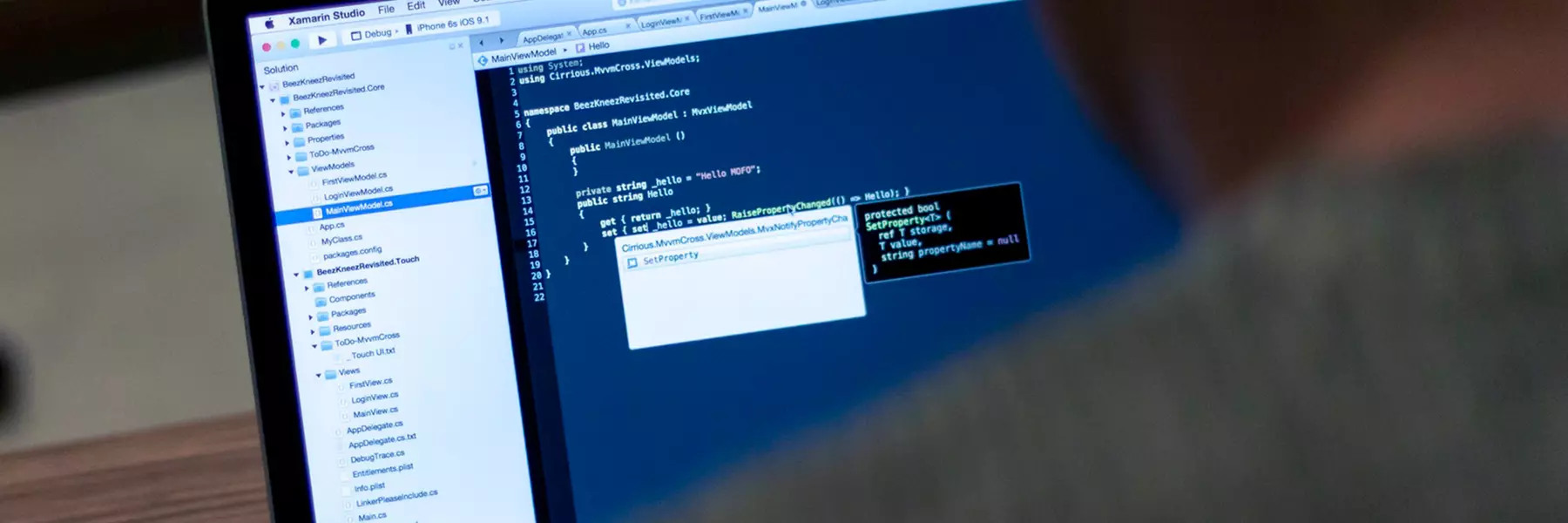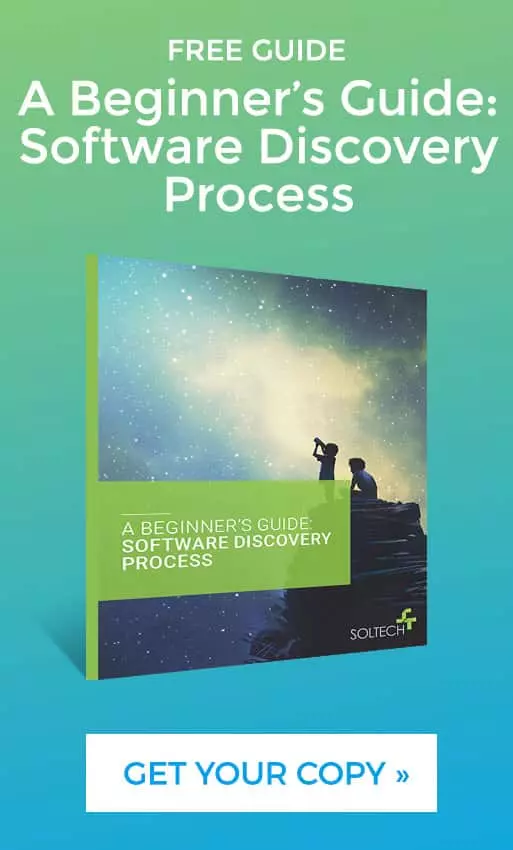
Best and Most Common Mobile and Web Technologies
By SOLTECH
Choosing the right web and mobile development technologies is critical for your application.
Older technologies may limit the lifespan of your software. Even if you select one of the latest web development technologies, it could be a mismatch. That means it’s not a good fit for your project, limiting your future performance or functionality.
If you are new to custom software, the number of modern technologies for web and mobile development can be overwhelming.
Finding the best technology for mobile app development and web development starts with some foundational knowledge. In this article, we give a brief overview of the different types of mobile app development technologies and web technologies. We’ll focus on their purposes in creating software. Then we list the most common technologies for each.
Web Front End
The user interface, or web front end, can be thought of as what’s visible. It is the part of the code that you — or any end user — sees and interacts with. You may hear related terms like User Experience or UX. That is the art of creating an application that is easy and intuitive to use.
What are the technologies that user interface developers use to build web screens? There are three primary options: HTML, CSS, and Javascript.
HTML
HTML stands for HyperText Mark-up Language and provides the structure on the screen. A developer will identify page titles, images, text boxes, buttons, and text with HTML. The current standard for HTML is HTML5.
CSS
CSS stands for Custom Style Sheets. The purpose of CSS is to give a uniform look and feel to your web pages. CSS controls the fonts used, text sizes, colors, and position of elements on the page. The current standard for CSS is CSS3.
Javascript
Javascript is a client-side scripting language. It allows your page to do things without contacting the main web server.
Validating the format of an email address is an example. Javascript is really powerful, and there are many Javascript libraries that make web page development much easier. Below are just a few.
- Javascript
- Angular
- Backbone
- JQuery
- D3.js
- Knockout
Responsive Design
Responsive design is a framework of HTML5, CSS3, and Javascript libraries that work together. They allow your web page to render well on a desktop, tablet, or mobile phone. Most use the concept of grids to lay out your page.
Depending on the size of the screen, certain elements change. In the context of going from a computer to a mobile phone, many elements change. Some items are made smaller, stacked on top of each other, or removed. Text is truncated, smaller versions of logos are used, etc.
You will hear developers and designers talk about Mobile First Design. This just means designing your web application for the smallest screen you want to support. Specifically,, limiting your content to only what is necessary. Then, you design for the next larger screen size and add in more content.
The two most popular Responsive Design frameworks today are Twitter Bootstrap and Zurg Foundation.
Web Back End / Mobile Back End
Behind the user interface is the code that does all the calculations, logic, and handling of data. Confirming that your password is valid and calculating your shipping charges are examples of back-end code. While it’s not visible to end users, it’s incredibly important.
For web and mobile applications, a few technologies stand out. The most common technologies for the programming language are C# .Net, Java, PHP, and Ruby on Rails.
In addition to programming languages, developers use frameworks and libraries to avoid writing more code than they need to. This speeds up development without compromising quality.
You may hear terms like MVC, MVVM, EntityFramework, Hibernate, NHibernate, Web Services (RESTful, SOAP), and Mobile Notification Services.
Databases
Databases store the data that software needs over a period of time. When you shop at Amazon, your shipping address, billing details, and past orders are all stored in a database. No matter the specific intent of your app or website, a secure and efficient database is crucial.
Common databases for a web application include:
- Microsoft SQL Server
- mySQL
- Oracle
- Postgresql
- Sqlite
- DynamoDB
- MongoDB
Native Mobile
When you write an application for a mobile device, you can do so using a native language. That simply means a programming language designed just for that platform (i.e. Apple iOS, Google Android, Microsoft Mobile).
The advantage of a native application is that you have full access to all functionality. The native language aligns with everything the operating system will support for that device.
The downside? If you want your application available for multiple platforms, then you will have to write the code multiple times.
Examples of native development languages include:
- Objective C and Swift for iOS
- Java for Android
- C# .Net for Windows Universal Apps
Cross- Platform Mobile
An alternative to native development is using a cross-platform framework. The goal of these frameworks is to write the code just once for a mobile application. Then, it can be compiled for each native device.
Cross-platform frameworks can’t access all functionality of a specific platform. However, it can take advantage of many features while making development faster and less complex.
There are pros and cons for each platform, as they each approach the problem differently.
The three leaders in cross-platform technology are Xamarin, Sencha, and PhoneGap/Cordova.
Summary
Technologies come and go, and they each play a different part in creating a web application or mobile application. Finding the right mobile and web technologies is crucial for long-term success. Understanding the basics of the current state of these technologies helps you make more informed decisions.
Use this article as a general overview and cheat sheet. It’s an easy reference for the top technologies that are most common in building modern custom software.
Would you like to talk about which technologies best suit your application? Let us know by filling out our contact us form on this page.
The Checklist For Sharing Your Software Vision
Before you get started in developing your software app, your thoughts and ideas should be clarified and written down. That way, they can be consistently and easily shared and understood. To help you get started on the right foot, we have created a checklist.
You can grab a copy of that checklist below and share it with your team!







